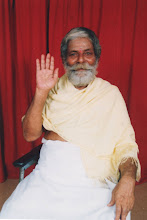Commentary by Chinmayananda Swami:
Why "participation-in-work" is said to be easier for a beginner than "renunciation-of-action" is explained here. While defining a samnyasi, Krishna's revolutionary statement cleanses the idea of renunciation from all its external embellishments. He gives more importance to the internal mental condition than to the external uniform. According to the Lord, he is a samnyasi who "neither likes nor dislikes."
Likes and dislikes, success and failure, joy and sorrow and such other pairs-of-opposites are the wheels on which the mind rolls forward earning the experiences of life. Our intellect can register a situation or a condition only with reference to the comparative estimate of its opposite. Thus, I can understand light only with reference to my knowledge of darkness. Comparison is the only way of understanding given to man. If there is no contrast for a thing, we cannot gain knowledge of that thing.
If comparison and contrast are the methods 'of knowing' for the mind-and-intellect instrument, then, to renounce them is to renounce the vehicle. A car is a vehicle that moves on the earth. It cannot be used in water. Thus, if I am sailing on the ocean, I am certainly not moving in the car, but I am using a boat which floats on water. In the field of plurality where comparison and contrast are possible, I can use the vehicle of the intellect-and-mind. The stanza here states that he is a true samnyasi, who has gone beyond the perception of contrast, which necessarily means that he is one who has transcended the inner instrument of mind-and-intellect.
This is no easy task; to free oneself from the pairs of opposites is to be free from all the limitations of mortal existence among finite objects. By thus defining a samnyasi, Krishna is not trying to paint a dreary picture of hopelessness for the seekers. He has in mind the growth and development of Arjuna. The Pandava Prince was then having, in his intellect, thick vasana-coatings of heroic instincts and kingly impulses for action. This stanza is given in order to persuade him to keep away from a hasty dash into samnyasa.





No comments:
Post a Comment